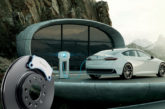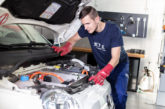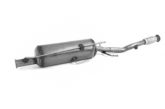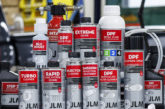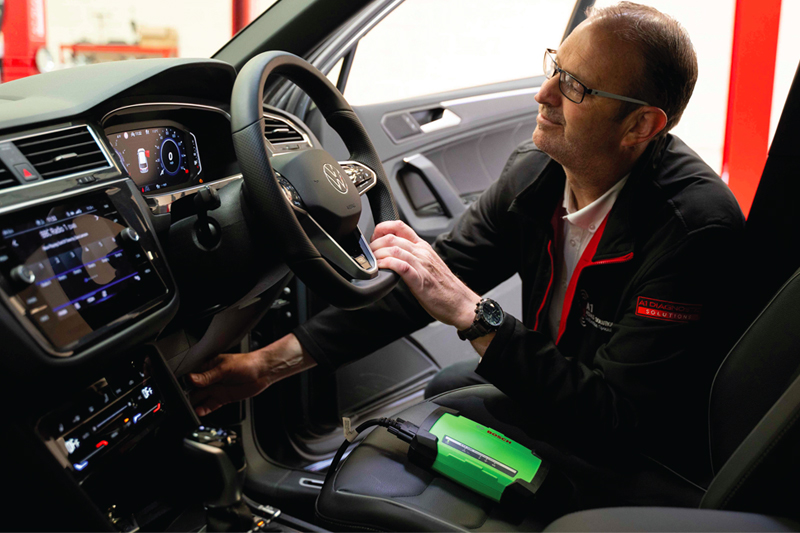
ADAS is no longer a new technology and independent garages can no longer plead ignorance when it comes to the C-word – calibration. Here, A1 ADAS’ managing director Iain Molloy urges workshops to re-evaluate their understanding of when a vehicle needs calibration.
When the IMI released the results of its recent consumer survey, which revealed that despite 86 per cent of vehicles having some form of ADAS technology only 18 per cent of vehicle owners were able to identify what ADAS actually is, it prompted calls for the industry to raise public awareness of ADAS technologies and when their vehicles will need calibration work. However, as someone who works with garages and bodyshops day in day out, it’s evident there’s still much work to be done at workshop level too. In short, there is an overall lack of understanding about when a vehicle needs its ADAS system calibrating.
It’s fair to say most technicians know calibration is needed when you remove a bumper or replace a windscreen. But many don’t realise that working on the steering rack, suspension, shock absorbers or simply carrying out wheel alignment, alters the geometry of the vehicle, and therefore its sensors. Calibration after bodywork repairs should go without saying, but sadly it isn’t always the case.
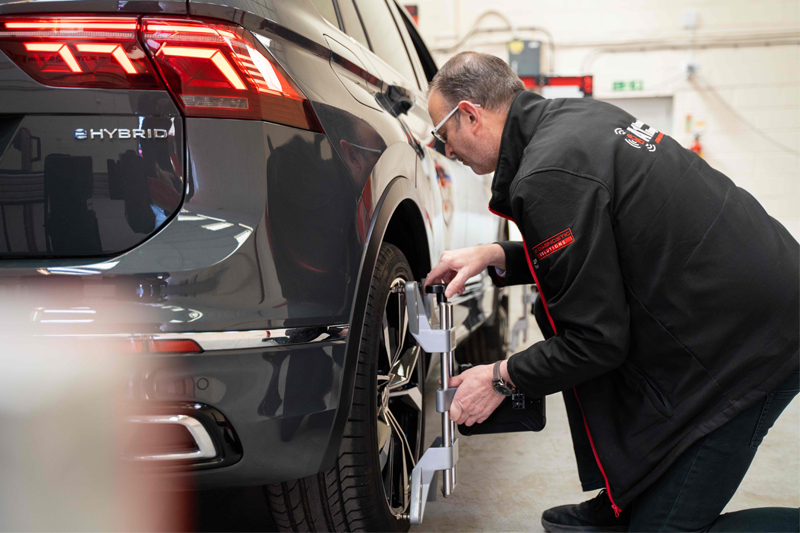
This could have repercussions for the driver of a ten-year-old vehicle when parking, right through to much more serious implications for the driver of a brand-new vehicle where lane assist and automatic braking are deployed. At this point, lives are at stake; the very thing ADAS is supposed to be protecting in the first place.
It’s not that technicians are purposely ignoring the ADAS element of repairs. A lot of knowledge is passed on by word-of-mouth from a work colleague. Unfortunately, a lot of it is incorrect or distorted, misheard on the grapevine. The owner of a very good garage recently bet me a fiver that he was right about calibration not being necessary after carrying out wheel alignment. He’s a great technician, experienced and well qualified, but safe to say on this subject, I won the bet.
There are known unknowns and there’s ADAS
The problem is, when it comes to ADAS, you don’t always know what you don’t know. It’s something we’re really keen to help the industry address because ADAS not only needs to be carried out by somebody competent, they should also hold the IMI’s AOM230 qualification.
Despite the speed of the evolution of ADAS being a major step forward for road safety, the reality for a busy workshop owner is that it can be a real pain. Aside from the potential liability implications of a vehicle being handed back to its owner with unsafe ADAS features, there’s the issue of prolonged key-to-key times and a back log of vehicles taking up valuable space.
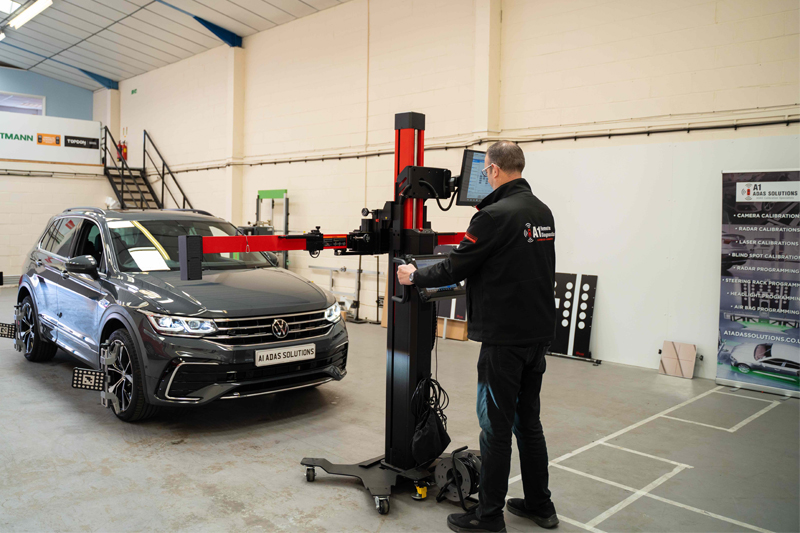
It leaves workshop owners with a dilemma and a decision to make about what to do. Until now, helpful advice hasn’t had much airtime because it’s been overshadowed by the ‘will we, wont we?’ debate of investing in the training and equipment to work on EVs. But unlike EVs, ADAS isn’t a ‘will we, won’t we?’ – it’s a ‘how will we?’.
By 2030, it’s predicted that 44 per cent of cars will have level 2 autonomy, so garages need to consider not if, but how they’re going to approach the issue. This rise in ADAS-equipped vehicles presents an opportunity for an additional major income stream and that’s available via two routes. The first is to invest in the equipment and training to carry out the work in-house, and the second is to forge a working partnership with an ADAS, diagnostic, and calibration specialist.
There’s no right or wrong route; it’s what’s best for your garage. Some workshops want to invest and become specialists. Others want to focus on something else. What’s important, is deciding how you’re going to provide the ADAS service to your customers. Whether that’s by selling ADAS as a service provided by your own technicians, or by putting a mark-up on the service you’ve bought in from a mobile van, or remotely dialled-in ADAS specialist. Both routes will reduce key-to-key times, prevent a backlog of work, and generate an extra revenue stream; it all contributes to a healthier bottom line.
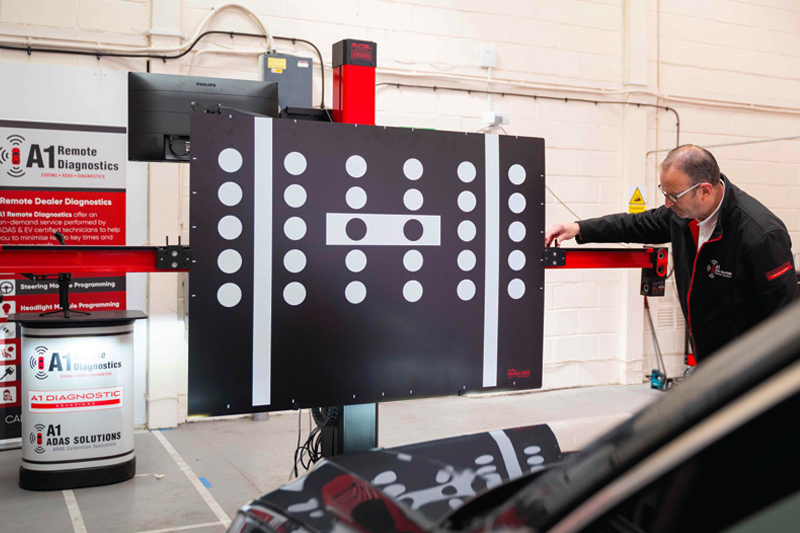
At A1 ADAS Solutions, we help workshops work out what route is best for them. For those who want to specialise in-house, we distribute ADAS and diagnostic equipment via a ‘set up for you’ service. For those who don’t want to invest or have the liability of carrying out the work themselves, we provide a ‘done for you’ ADAS and diagnostics service either via our national mobile fleet, or by remotely dialling into the vehicle via an interface.
A note for those investing in a ‘set up for you’ option; it shouldn’t just be transactional. Managing ADAS work requires ongoing training and technical support. With that in place, garages should maximise their return on investment in as little as two to three months. Whichever route a garage chooses, the road ahead is paved with ADAS potential. Those who navigate it wisely stand to reap the rewards of the evolving automotive landscape.



